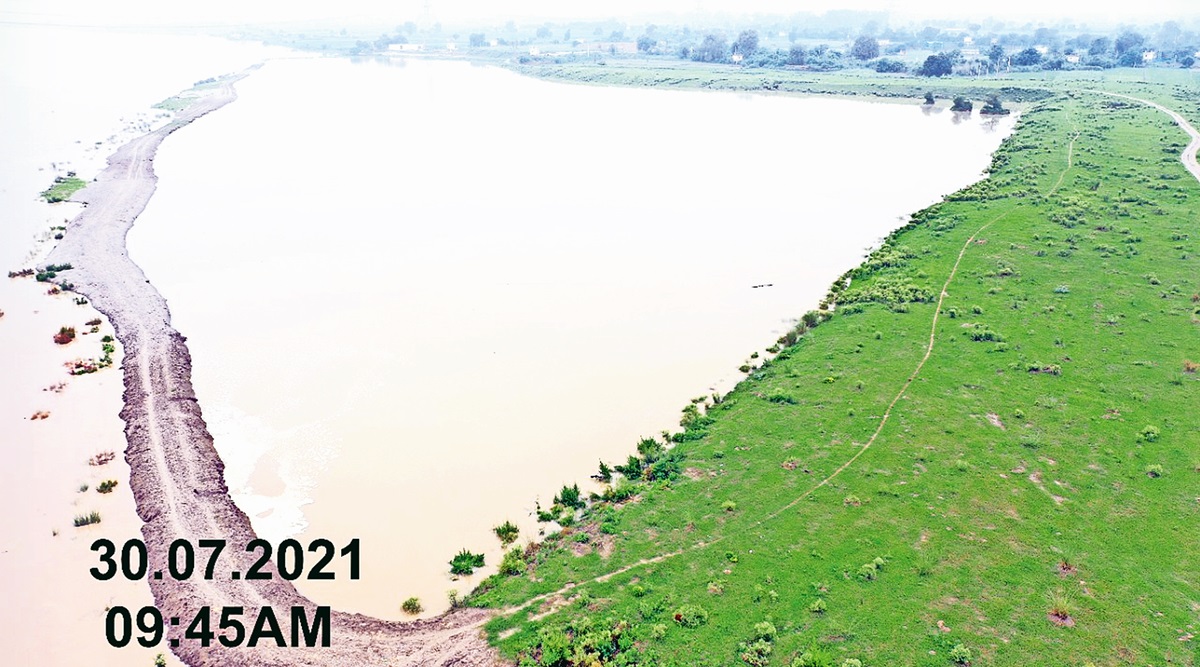 The 25-acre reservoir was created along the floodplains at Palla. The project, meant to capture excess water from the Yamuna with the long-term intention of recharging the groundwater table, was launched as a 3-yr pilot scheme in 2019.
The 25-acre reservoir was created along the floodplains at Palla. The project, meant to capture excess water from the Yamuna with the long-term intention of recharging the groundwater table, was launched as a 3-yr pilot scheme in 2019. A project meant to recharge the groundwater table has begun to bear fruit, with floodwater from the Yamuna filling up a 25-acre reservoir created along the floodplains at Palla.
Water began to enter the artificial pond on July 23, after rain and subsequent discharge of water from the Hathnikund barrage in Haryana, officials associated with the project said. With more rain and excess discharge from the barrage over the past few days, the reservoir is now nearly full, with water extending till its embankments, they said.
The project, meant to capture excess water from the Yamuna with the long-term intention of recharging the groundwater table, was launched as a three-year pilot scheme in 2019 and is now in its final year.
Soon after the idea was approved by the National Green Tribunal (NGT) in 2019, the pilot project was initiated on 40 acres of land at Sungherpur village, near Palla. Of this, 30 acres of land was taken on a three-year lease from farmers in the area, while the remaining 10 acres belong to the gram sabha.
A network of 33 piezometers were installed in and around the floodplains to determine the impact of the reservoir on the groundwater level. A piezometer is a device that can measure the depth of groundwater.
In 2019, a rise of 1 to 1.3 metres was observed in groundwater levels, an official of the Irrigation and Flood Control Department said. In 2020, the piezometers recorded a rise of 0.5 to 2 metres of groundwater, the official said.
In 2019, the discharge from the Hathnikund barrage stood at a high of over 8 lakh cusecs, while last year, a continuous discharge of around 36,000 cusecs for around six hours had ensured flow of water into the reservoir.
This year, over 1,56,000 cusecs of water was released on Wednesday and the figure remained at over 1 lakh for a few hours, which filled up the lake, the official added.
The Irrigation and Flood Control Department, which is implementing the project, will submit a report on the project to the Principal Committee appointed by the NGT, after the monsoon season ends this year.
Once it has been reviewed and approved by the Tribunal, the project is likely to be extended to around 1,200 acres along the floodplains from Palla to Wazirabad, officials said.
The Delhi government will have to decide whether to acquire the remaining land or take it on lease.
The average depth of the reservoir is around 1.75 metres. If the project is extended beyond its pilot phase, the Delhi Jal Board plans on installing tubewells in the area to tap the groundwater for drinking purposes, the official said.
- The Indian Express website has been rated GREEN for its credibility and trustworthiness by Newsguard, a global service that rates news sources for their journalistic standards.

